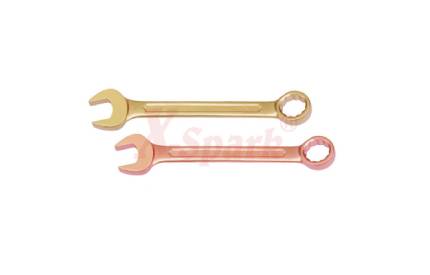The material of explosion-proof tools is copper alloy. Due to the good thermal conductivity of copper and the properties of almost no carbon, the heat generated in a short time is absorbed and conducted when the tool and object are rubbed or impacted. Another reason is that copper itself is relatively Soft, friction and impact have good concession, it is not easy to produce tiny metal particles, so we can hardly see sparks, so explosion-proof tools are also called non-spark tools.
Principle: Friction and impact sparks generated by tools such as drills, picks, hammers, pliers, and explosion wrench, which are usually made of steel materials, when they are severely moved or missed. Use in inflammable places. Tools used in flammable and explosive places must be made of special materials that do not cause friction, impact sparks, or even hot surfaces (biǎo miàn). Such tools are called explosion-proof tools. Iron and steel materials have higher strength and hardness, which are suitable for manufacturing tools, and the strength and hardness of steel products increase with the increase of carbon content. However, research on the mechanism of friction spark generation in steel materials shows that it is precisely the carbon contained in steel that is the source of friction sparks. In order to eliminate friction and impact sparks of tools, high-hardness aluminum bronze explosion-proof tools use copper as the main raw material, non sparking safety tools. Compared with steel, there are two significant differences:

Explosion Wrench
1, does not contain carbon. Oxygen-iron-carbon reaction chains do not appear, so no sparks appear.
2. The strength and hardness of steel products are relatively low, and the thermal conductivity is higher than that of steel. When friction or knock occurs, local (part) friction points will plastically deform to avoid friction energy concentration. At the individual contact points, coupled with the high thermal conductivity of the material, the heat generated by friction is quickly dissipated to the matrix to reduce the danger of hot and high temperatures at the point of frictional impact. The material of explosion-proof tools is copper alloy. Due to the good thermal conductivity of copper and the properties of almost no carbon, the heat generated in a short time is absorbed and conducted when the tool and object are rubbed or impacted. Another reason is that copper itself is relatively Soft, friction and impact have good concession, it is not easy to produce tiny metal particles, so we can hardly see sparks, so explosion-proof tools are also called non-spark tools. The above two points are the principle of explosion-proof tools.
However, the strength and hardness of pure copper are too low to be used directly as tools. You need to add appropriate metal elements such as beryllium, aluminum (Al), titanium, and nickel to smelt copper alloys to increase their strength and hardness . Existing explosion-proof tools in China include aluminum bronze and beryllium bronze. Due to the high cost of beryllium bronze explosion-proof tools, aluminum bronze explosion-proof tools are mostly used in inflammable and explosive places. However, the strength and hardness of pure copper are too low to be used directly as tools. You need to add appropriate metal elements such as beryllium, aluminum (Al), titanium, and nickel to smelt copper alloys to increase their strength and hardness . Existing explosion-proof tools in China include aluminum bronze and beryllium bronze. Due to the high cost of beryllium bronze explosion-proof tools, aluminum bronze explosion-proof tools are mostly used in inflammable and explosive places.